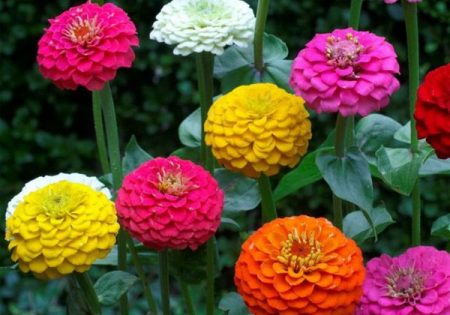 A beautiful zinnia plant is able not only to decorate a flowerbed, but also from the beginning of summer to late autumn it can cheer people up with its charming appearance. After all, such a beauty is easy to meet in almost every private house. The flower has gained its popularity not only among gardeners, it is also loved by many summer residents who prefer to decorate their plots with beautiful flowers.
A beautiful zinnia plant is able not only to decorate a flowerbed, but also from the beginning of summer to late autumn it can cheer people up with its charming appearance. After all, such a beauty is easy to meet in almost every private house. The flower has gained its popularity not only among gardeners, it is also loved by many summer residents who prefer to decorate their plots with beautiful flowers.
Undoubtedly, it should be noted that before carrying out planting of this flower, it is necessary to study some of the nuances and subtleties. Indeed, in order for the result to please its success, one must always exert some efforts and efforts. Zinnia is not considered a moody flower, but loves a lot of light and fertile soil.
The plant does not favor cold weather, on the basis of which, you need to carefully choose the time and place of planting. The soil should be neutral, although many flower growers note that this flower remarkably survives in acidic soil. The fertile land will provide the plant with a long flowering.
Soil preparation
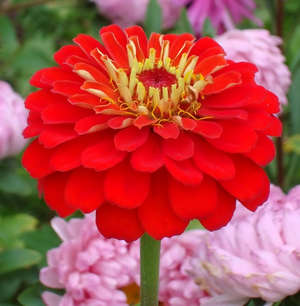
For soil fertility, you can fertilize it. Moreover, today shops are simply overflowing with various complex fertilizers. In addition, you can use ash or all known manure. Experienced gardeners who constantly decorate their plots with such a charming flower, advise adding humus when digging the ground and mix it well with the ground. Then the soil becomes suitable for planting this plant.
Digging should be on the "bayonet" of the shovel, so that the roots can easily grow, because it depends on them the nutrition of the plant. And then in the future it will be easier to loosen the earth, and the root system will receive the necessary oxygen.
Seed growing
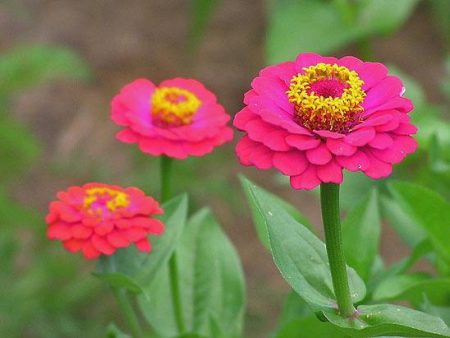
Many gardeners prefer to grow zinnia in seedlings. Seeds can be sown in the month of April, this period is considered suitable for such a plant. It is better to choose large seeds, because as experienced gardeners note, they germinate faster, that is, after a week you can observe how small sprouts hatch.
Zinnia can be sown in any deep containers, for example, in plastic or wooden boxes. Fertile soil is poured there, after which it should be decontaminated with a weak solution of potassium permanganate. This approach will protect the culture from possible diseases. Then the earth is well moistened and seeds are planted.
Some experienced gardeners, when sowing, lay seeds on the surface of the soil, and then, using a match, they deepen each into the ground. In this way, it is easy to plant seeds so as to avoid diving. Although in many cases summer residents prefer to sow the seeds separately in peat cups and then plant them directly in these cups into the ground.
Do this in order not to damage the root system of plants. Peat cups in the earth decompose, and the roots go further into the ground. Such plants take root better and get sick less, plus everything from peat cups has its own additional benefits for plant nutrition.
After the seeds have sprouted, it is necessary to monitor the moisture of the soil. The surface of the earth should not dry out and crack. And already in June, many are trying to plant seedlings in open ground. But since the temperature conditions of each region are different, you should make sure that there are no frosts, otherwise the plants may die.
Some gardeners prefer to sow the seeds immediately in the open ground for this purpose at the end of May, you can make such a sowing.Colds recede, and the plant feels more comfortable at this time. But it is best after the seeds are sown to cover them with covering material, because as you know, the nights are still cold, and in order for sprouts to appear faster they need to create comfortable conditions. Covering material will contribute to this and create a greenhouse effect. Then the seedlings will be the earliest.
Care
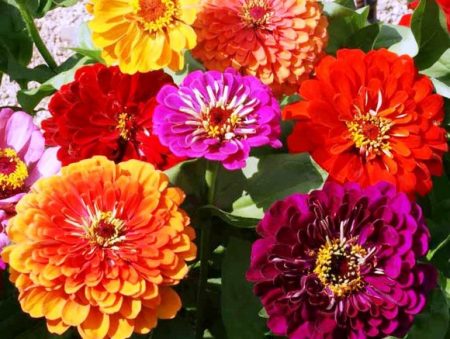
Undoubtedly, like any other culture, zinnia does not like when weeds get in the way, especially since they take away the necessary moisture and prevent the roots from growing further. Based on what, weeds should be removed. Loosen the soil near the flower so that oxygen arrives in a timely manner. Also, the plant should not be abundantly watered, but this crop will not tolerate drought. Therefore, care must be taken to keep the soil moist.
Like many other plants, zinnia needs to be fed. Such actions must be carried out necessarily the first top dressing should be carried out before the formation of buds. To do this, some use organic fertilizers, which are sold in specialized stores. Many use manure or chicken droppings, which must be prepared in advance. If bird droppings are used, then it is better to take them already decayed, as fresh, you can "burn" the root system of the plant and it, of course, will die.
During the formation of buds, the plant should also be fed, as this is beneficial for the flowering itself. Experienced flower lovers often use "Agricola" for these purposes, which is able to provide this culture with the necessary nutrients.
Before proceeding to top dressing, you must first remove all weeds, loosen the soil, and mix the ground slightly with ash near the plant stem. After the buds begin to open, they can be treated with the preparation “Bud”, which is sold in specialized stores. Use it as described in the attached instructions.
Plant diseases
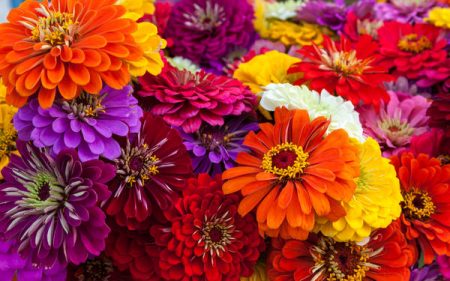
Zinnia, like many other cultures, is not infrequently exposed to various diseases. Quite often rot occurs at the stem and root, as well as powdery mildew and many other diseases that can destroy this charming plant. It is also impossible to exclude aphids and annoying slugs.
If rot is detected in a plant, it is necessary to immediately treat it with the Khom preparation, it can easily cope with such ailments. Dilute the product should be strictly according to the attached instructions, otherwise you can personally destroy your favorite plant. Powdery mildew will disappear if the crop is treated with Topaz, which is also bred according to the attached instructions. Aphids will leave the treatment of the plant with Iskra.
Some gardeners, based on their experience, advise resorting to natural methods of pest control. For example, aphids do not like wood ash, and if a plant is sprinkled with such fertilizer several times during the season, then such an attack is unlikely to start. To avoid the multiplication of slugs, many resort to the help of eggshells, which are dried, finely crushed and mixed with the ground when loosening the soil in plants. Slugs will immediately leave if they find such an addition to the soil.
Many people know that before you grow any culture, you need to try at least a little bit, even if the plant is not whimsical and capricious, it still needs some care. And if you take into account the fact that it is a pleasure to grow your favorite plants, then it’s worthwhile to strengthen it to enjoy the result in the future. Therefore, everything definitely needs to be done correctly and correctly, then the desired goal will not take long.
No less beautiful flower ranukulus, which should also decorate your flowerbed.

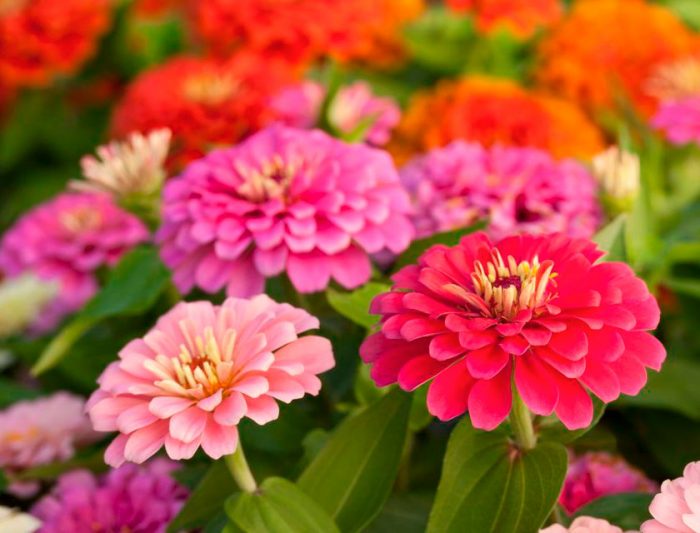
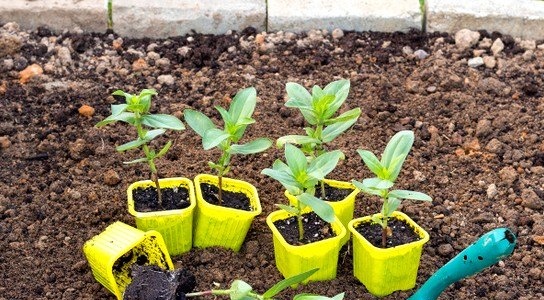
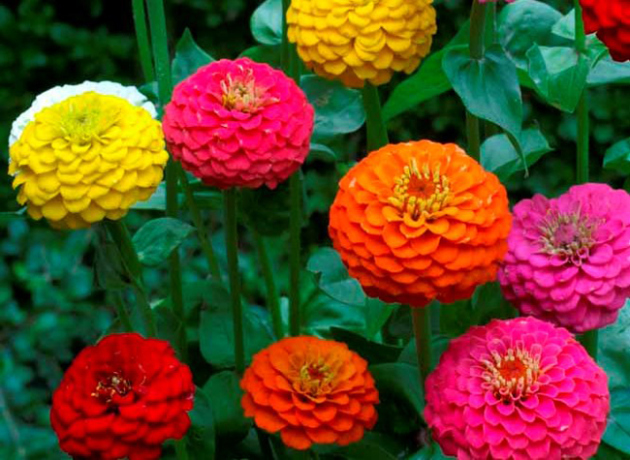
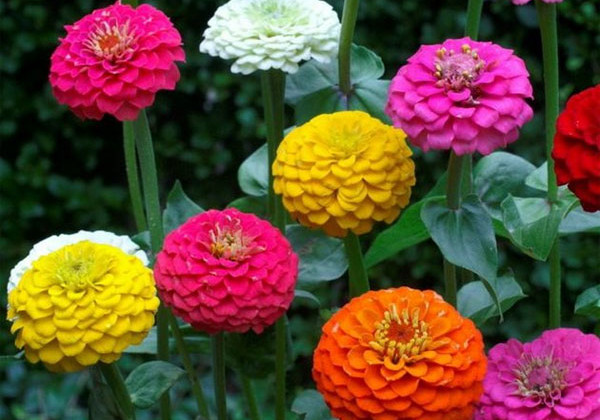 Zinnia: growing from seeds when to plant
Zinnia: growing from seeds when to plant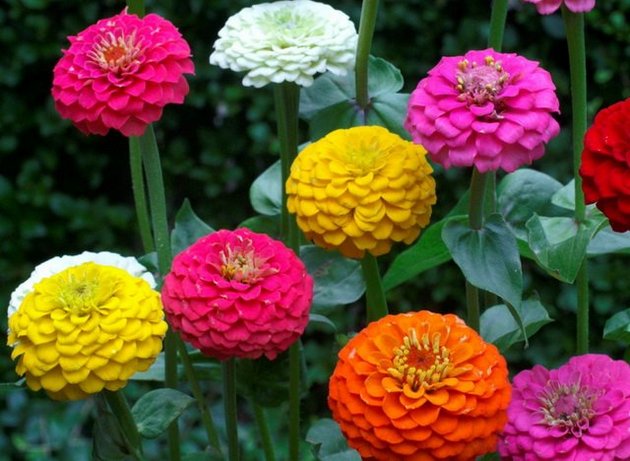 Planting zinnia on seedlings in 2016
Planting zinnia on seedlings in 2016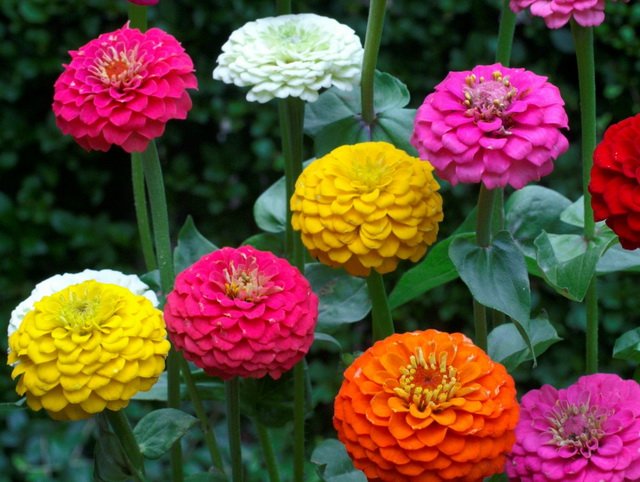 Zinnia graceful, growing from seeds
Zinnia graceful, growing from seeds